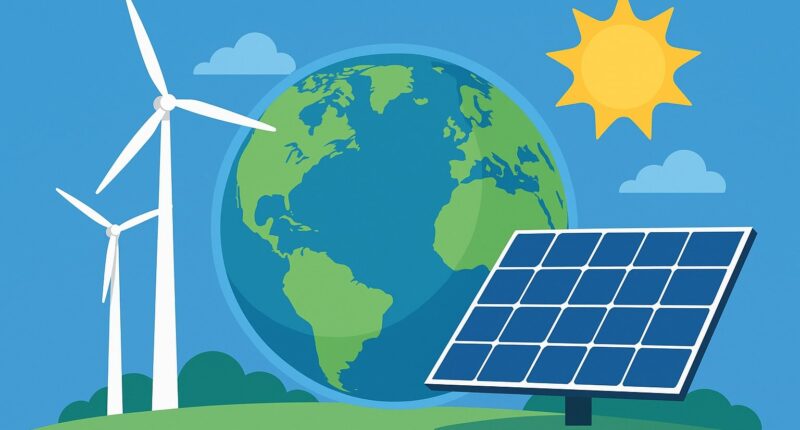The transition toward renewable energy is no longer a distant goal—it’s a global necessity. With rising concerns about climate change, energy security, and sustainability, nations, businesses, and individuals are accelerating the shift away from fossil fuels. Renewable energy has become the cornerstone of future growth, offering both environmental and economic benefits. Here’s what you need to know about the global renewable energy movement.
Why the World Is Moving Toward Renewable Energy
Climate Change and Environmental Concerns
The primary driver of renewable energy adoption is the urgent need to reduce greenhouse gas emissions. Fossil fuels such as coal, oil, and natural gas remain the biggest contributors to carbon emissions. Renewable sources like solar, wind, hydro, and geothermal energy offer clean alternatives that can drastically cut pollution and slow global warming.
Energy Security and Independence
Renewable energy reduces reliance on imported fuels, which are vulnerable to price volatility and geopolitical tensions. By investing in local renewable projects, countries can build energy independence, protect their economies, and ensure a stable power supply.
Economic Growth and Job Creation
According to the International Renewable Energy Agency (IRENA), renewable energy sectors create millions of jobs worldwide. From solar panel manufacturing to wind turbine installation, the green energy industry fosters innovation, supports small businesses, and stimulates local economies.
Key Renewable Energy Sources Driving the Transition
Solar Energy
Solar power has become the most rapidly expanding renewable energy source. Falling panel costs and government incentives make solar accessible for both residential and commercial use.
Wind Energy
Onshore and offshore wind farms are playing a crucial role in providing clean, large-scale electricity. Countries like Denmark, Germany, and the U.S. are leading in wind technology and deployment.
Hydropower and Geothermal Energy
Hydropower remains the largest renewable energy source globally, though environmental concerns around dam construction exist. Geothermal energy, while less common, provides consistent power and is gaining attention in volcanic regions.
Global Policies and Investments in Renewable Energy
Governments worldwide are adopting policies to encourage renewable energy adoption. Incentives include tax credits, feed-in tariffs, subsidies, and renewable portfolio standards. Additionally, global investment in clean energy reached record levels in recent years, reflecting strong confidence in the sector’s long-term growth.
Organizations like the United Nations and the International Energy Agency (IEA) continue to stress that meeting net-zero goals by 2050 requires massive expansion of renewable capacity.
Challenges Facing the Renewable Energy Push
Despite rapid progress, challenges remain. These include:
-
Infrastructure limitations such as outdated grids.
-
Energy storage needs to address intermittent supply from solar and wind.
-
Policy and financing barriers in developing nations.
Overcoming these challenges requires innovation, international cooperation, and long-term planning.
The Future of Renewable Energy
The future is clear: renewable energy will dominate global power generation. As technology advances and costs continue to fall, clean energy adoption will accelerate. For businesses and individuals, investing in renewable solutions today means being part of a sustainable, resilient tomorrow.







